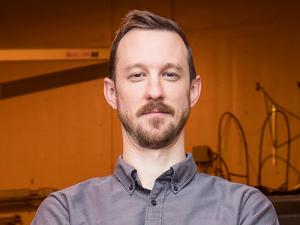
Robert N. Noyce Career Development Professor
Head, PSFC Engineering Group
Zachary (Zach) Hartwig is the Robert N. Noyce Career Development Professor at MIT and an Associate Professor in the Department of Nuclear Science and Engineering (NSE) with a co-appointment at the MIT Plasma Science and Fusion Center (PSFC). He has worked primarily in the areas of large-scale applied superconductivity, magnet fusion device design, and plasma-material interactions with additional activities in nuclear security, radiation detector development, Monte Carlo particle transport simulation, and accelerator science and engineering. His active research focuses primarily on the development of high-field superconducting magnet technologies for fusion energy and accelerated irradiation methods for fusion materials using ion beams. He was the Principal Investigator and Project Head of the SPARC Toroidal Field Model Coil Project, a successful 3-year effort from 2018 to 2021 to design, build, and test the first large-scale, high-field, fusion-relevant high temperature superconductor magnet. He is a co-founder of Commonwealth Fusion Systems (CFS), a private company commercializing fusion energy. He oversees the NSE PhD qualification exam process, is a member of the MIT Radiation Protection Committee and Gender Equity Committee, and serves as an MIT First-Year Advisor. He received his PhD from MIT NSE in 2013 for developing a new generation of particle accelerator-based diagnostics to study plasma-material interactions in fusion devices and received his B.A. in Physics from Boston University in 2005.
Proton beams between 10 and 30 MeV offer a rapid, high fidelity approach to quantifying the evolution of engineering material properties in response to fusion-relevant radiation conditions. The proton energy provides the capability to tune the material response to match the application of interest while the uniform irradiation depth of protons in this energy range is several hundred microns or more, enabling bulk irradiation of macroscopic samples suitable for direct engineering property characterization such as tensile testing. Other advantages include high dose rates for rapid testing, low residual activation to simplify post-irradiation experiments, transmutation to produce bulk helium or radiation-induced precipitates.
Recent advances in the performance and industrial production of high-temperature superconductors — particularly Rare Earth Barium Copper Oxide, or ReBCO — are enabling a new generation of large-scale superconducting magnets producing magnetic fields well in excess of 20 tesla for applications such as fusion energy, particle accelerators, and other industrial applications. Active research in this area is focused on demonstrating 50 to 100 kA class HTS conductors for large-scale magnets, qualifying novel quench detection technologies, developing defect-tolerant HTS conductors and magnets, quantifying progress evolution under irradiation, and building and testing the 20 tesla, 10 ton SPARC Toroidal Field Model Coil.